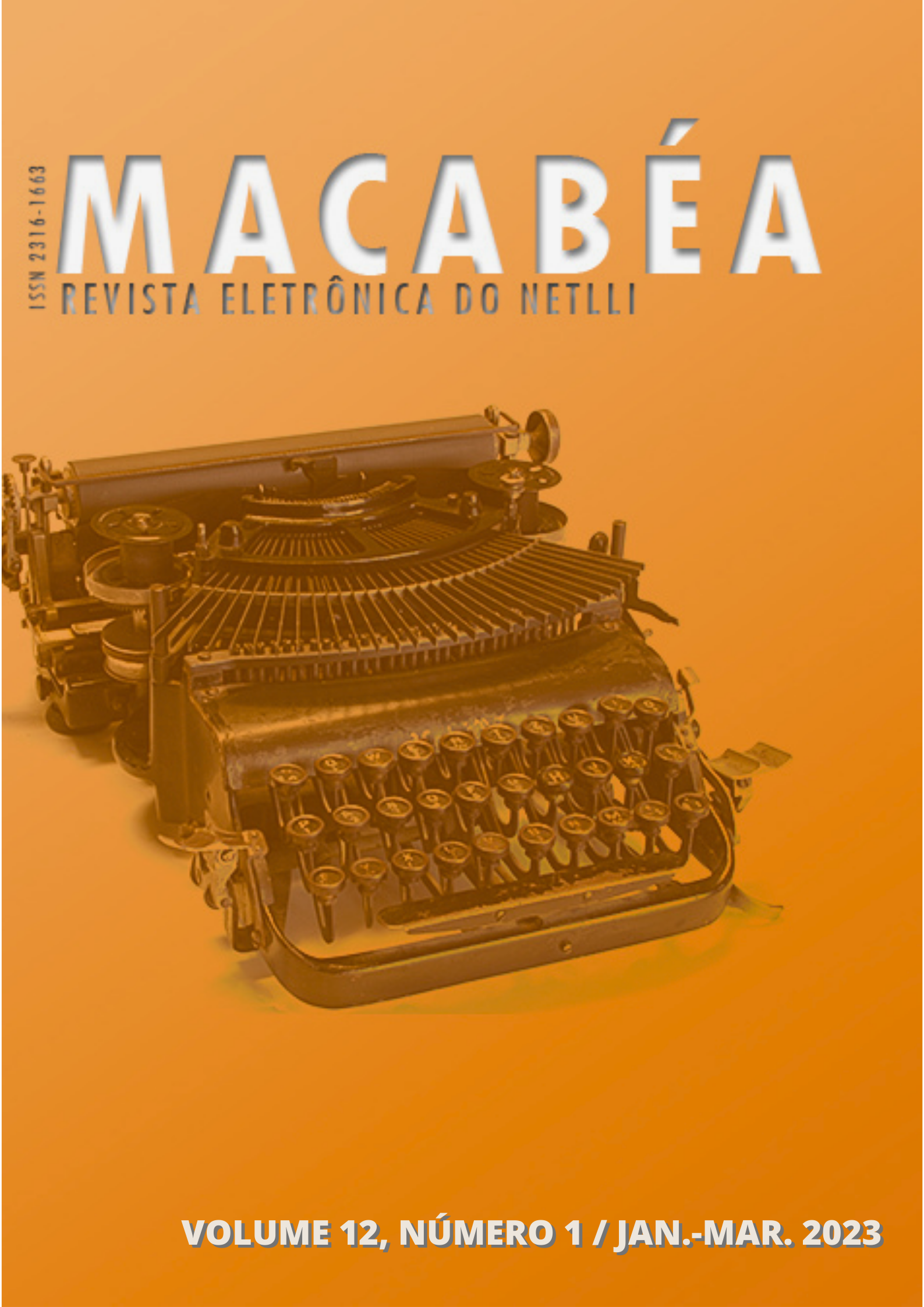A ORDEM DISCURSIVA NA CIDADE DOS LOUCOS E DAS ROSAS
DOI:
https://doi.org/10.47295/mren.v12i1.727Keywords:
Análise do Discurso Materialista. Ordem do Discurso. Cidade das Rosas. Cidade dos Loucos.Abstract
The present article aims to analyse how the meanings and the memory of the statements "City of roses" and "City of lunatics" move, confront and integrate themselves into the discursive order of Barbacena. The town, which served as the stage for the creation of the Colony Hospital, where thousands of people were interned, has also become famous for its cultivation of roses. As a result, the city was nicknamed with both adjectives. To achieve the objective of this research, a corpus of five current photographs of the city was selected , divided from the identification of the discursive sequences to which they belong. The analysis is theoretically and methodologically grounded in the Materialist Discourse Analysis, mainly in the contributions of Orlandi (1999, 2003, 2007ª, 2007b, 2014), regarding the analysis of how cities produce meanings, and Lagazzi (2015), in the understanding that images are signifying materialities. The work allows the identification of a silencing of the "City of lunatics" meanings, whose circulation happens, more expressively, in the margins of the city. On the other hand, in the centre, it is sought, systematically, to highlight the sequence "City of Roses". Nevertheless, although there is silence, the two meanings coexist, moving and integrating the city’s discoursive order.
References
ANDRADE, Carlos Drummond de. O avesso das coisas: aforismos. 1ª ed. São Paulo, SP: Companhia das Letras, 2019
ARBEX, Daniela. O Holocausto Brasileiro: vida, genocídio e 60 mil mortes no maior hospício do Brasil. São Paulo: Geração Editorial, 2013
DUARTE, Maristela Nascimento. De “Ares e Luzes” a “Inferno Humano”. Concepções e práticas psiquiátricas no Hospital Colônia de Barbacena: 1946 -1979. Estudo de Caso. 13
FOUCAULT, Michel. A História da Loucura na Idade Clássica (1961). 5. ed. São Paulo: Perspectiva, 1997.
GODOY, Ana Boff de. Arquivos de Barbacena, a Cidade dos loucos: o manicômio como lugar de aprisionamento e apagamento de sujeitos e suas memórias. Revista Investigações, vol. 27, nº 2, Julho/2014.
GRIGOLETTO, Marisa. Silenciamento e memória: discurso e colonização britânica na Índia. Organon, v. 17, n. 35, p.220-243, 2003. DOI: 10. 22456/2238-8915.30026
LAGAZZI, Suzy. Linha de passe: a materialidade significante em análise. Rua, Campinas, SP, v. 16, n. 2, p. 173-182, 2015. DOI: 10.20396/rua.v16i2.8638825.
ORLANDI, Eni Puccinelli. As formas do silêncio: no movimento dos sentidos. 6ª ed. Campinas, SP: Unicamp, 2007.
ORLANDI, Eni Puccinelli. A casa e a Rua: uma relação política e social. 2011.
ORLANDI, Eni Puccinelli. A linguagem e seu funcionamento: as formas do discurso. 6 ed. Campinas, SP: Pontes, 2011.
ORLANDI, Eni Puccinelli. Parkour: corpo e espaço reescrevem o sujeito. Línguas e
Instrumentos Linguísticos, Campinas, n. 34, p. 75-86, jul./dez. 2014
ORLANDI, Eni Puccinelli. Análise de discurso: princípios e procedimentos. 11 ed. Campinas, SP: Pontes, 2015.
ORLANDI, Eni Puccinelli. Maio de 68: silêncio da memória. In: Papel da Memória. Campinas: Pontes, 2015. p. 53 – 61
ORLANDI, Eni Puccinelli. N/O Limiar da cidade. Rua, Campinas, SP, v. 5, p. 7-19, 2015. DOI: 10.20396/rua.v5i0.8640678
PÊCHEUX, Michel. Papel da memória. In: ACHARD, Pierre et. al. Papel da Memória. Campinas: Pontes, 2015. p. 43-51.
PREFEITURA MUNICIPAL. Barbacena – antigo Hospital Colônia. Ipatrimônio.org, 2020. Disponível em < http://www.ipatrimonio.org/barbacena-antigo-hospitalcolonia/#!/map=38329&loc=-21.205405999999993,-43.786491,17 > Acesso em: 19/10/2021
SEM AUTOR. Saúde com Arte: museu da loucura, 2021. Disponível em
http://www.ccms.saude.gov.br/noticias/saude-com-arte-museu-da-loucura-mg> Acesso em:19/10/2021
Downloads
Published
How to Cite
Issue
Section
License
Copyright (c) 2023 Camila da Silva Gomes

This work is licensed under a Creative Commons Attribution-NonCommercial-ShareAlike 4.0 International License.
Autores que publicam nesta revista concordam com os seguintes termos:
a. Autores mantém os direitos autorais e concedem à revista o direito de primeira publicação, com o trabalho simultaneamente licenciado sob a Licença Creative Commons Attribution que permite o compartilhamento do trabalho com reconhecimento da autoria e publicação inicial nesta revista.
b. Autores têm autorização para assumir contratos adicionais separadamente, para distribuição não-exclusiva da versão do trabalho publicada nesta revista (ex.: publicar em repositório institucional ou como capítulo de livro), com reconhecimento de autoria e publicação inicial nesta revista.
c. Autores têm permissão e são estimulados a publicar e distribuir seu trabalho online (ex.: em repositórios institucionais ou na sua página pessoal) a qualquer ponto antes ou durante o processo editorial, já que isso pode gerar alterações produtivas, bem como aumentar o impacto e a citação do trabalho publicado (Veja O Efeito do Acesso Livre).










